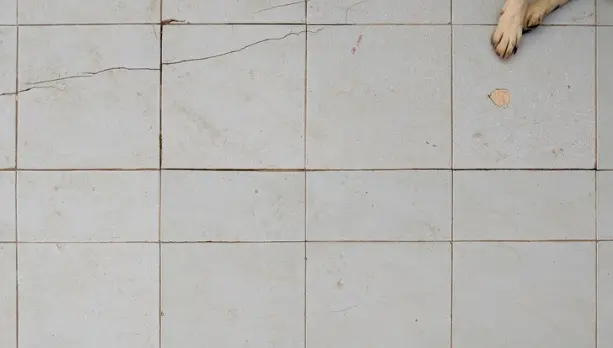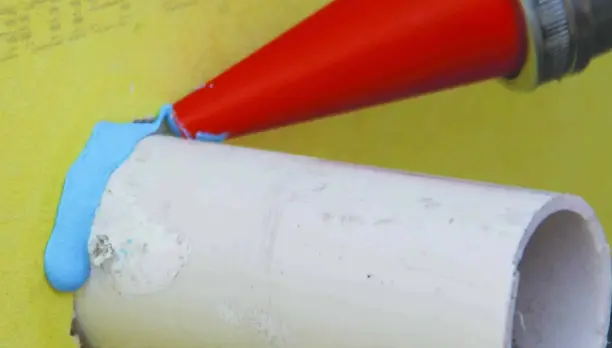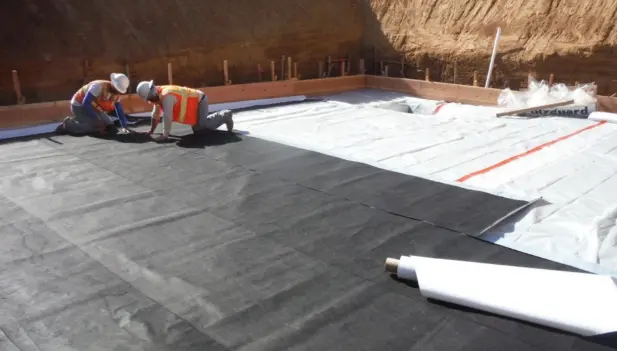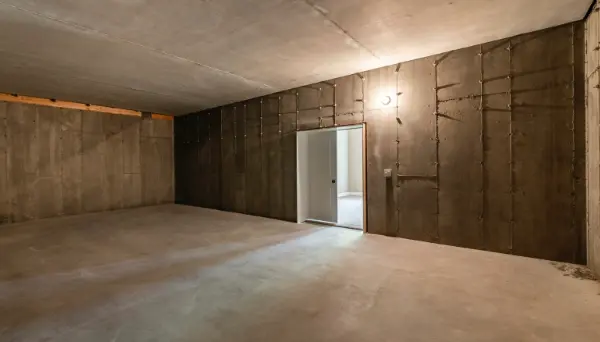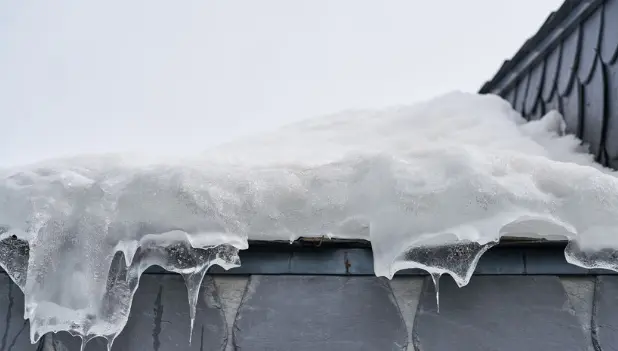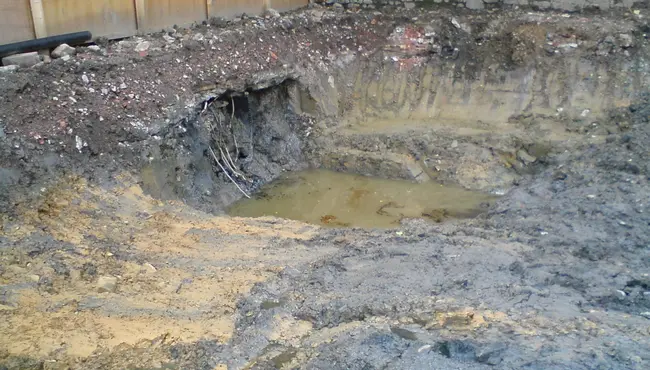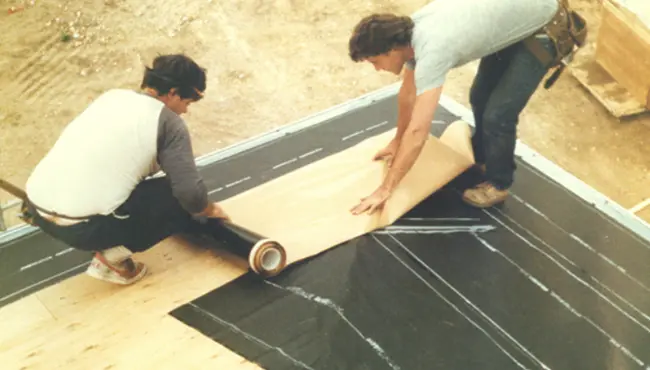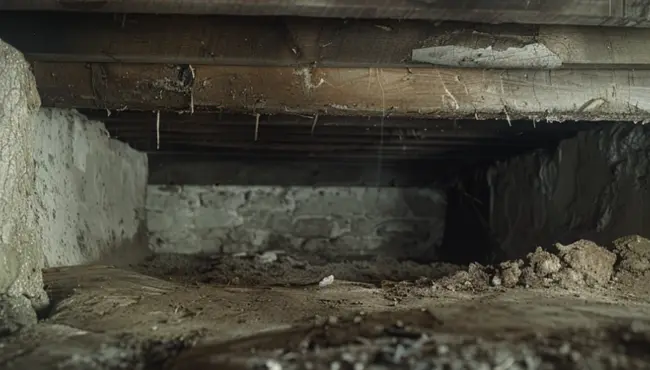Long-lasting, easy-to-use elastomeric flashing sealants provide weatherproofing protection. Properly installed, they prevent leaks at flashings in walls, gypsum sheathing, vents, skylights, chimneys, and stacks and fill gaps at head joints, minor cast concrete cracks, concrete masonry cracks, gypsum sheathing joints, and penetrations. In addition, elastomeric properties keep the flashing flexible over time, to resist brittleness.
Flexible Elastomeric Flashing Sealants
High-quality elastomeric flashing, like Polyguard elastomeric products, will retain its original shape and size when significantly stretched or compressed, even when applied to geometrically complex buildings with outside and inside corners, recessed windows, etc. Likewise, Polyguard elastomeric products will stretch and maintain their original characteristics if a building moves.

What is Elastomeric?
Elastomer polymers offer unique viscosity and elasticity properties (viscoelasticity). The elastomers' amorphous molecules lack a definite shape which makes them well-suited for flexible applications. Elastomeric viscoelastic and amorphous properties make it ideal for building adhesives, sealants, and flashing materials for filling and sealing gaps during construction.
Elastomeric properties create stable flashings with many benefits:
Weak intermolecular forces allow them to stretch extensively
Exhibits low Young's modulus and high yield strength and failure strain, which allows them to retain their original shape and size when significantly stretched or compressed
Provides abrasion and tear resistance
Stays flexible at low temperatures
Offers slip resistance
Types of Elastomers
Elastomers fall into two categories, depending on how they react under the sulfur vulcanization process: saturated and unsaturated.
The sulfur vulcanization process involves heating natural rubber or other related polymers with accelerators and sulfur-based curatives. The curing process aims to attain various degrees of hardness, durability, and elasticity from the polymers.
Saturated Elastomers
Saturated elastomers' strong stability under heat, ozone, radiation, and oxygen exposures makes them resistant to sulfur vulcanization.
Examples of saturated elastomers include:
Epichlorohydrin rubber (ECO)
Chlorosulfonated polyethylene (CSM, or Hypalon), and many more
Ethylene propylene diene rubber (EPDM)
Ethylene propylene rubber (EPM)
Fluorosilicone rubber (FVMQ)
Unsaturated Elastomers
Unsaturated elastomers contain highly-stable carbon-carbon double or triple bonds. Manufacturers modify unsaturated elastomers to suit various purposes through sulfur vulcanization, to allow for more application areas than less reactive saturated elastomers.
Examples of unsaturated elastomers:
Nitrile rubber
Butyl rubber
Styrene-butadiene rubber
Natural polyisoprene
Synthetic polyisoprene
Chloroprene rubber, and many more
Tips for Applying Elastomeric Flashings
The success of elastomeric flashings depends on proper application.
Before applying elastomeric flashings:
Remove loose particles and dust.
Clean and dry the substrate surface before application.
Never apply elastomeric flashings to frost and ice-covered substrate surfaces.
Prime the substrate with Polyguard 650 LT Liquid Adhesive to improve the adhesion of the elastomeric flashing.
Applying the elastomeric flashing:
Shingle lap the flashing tape to ensure a tight seal.
Lay the tape flat to avoid wrinkles and bends, which can allow moisture infiltration into the wall system and diminish the tape's adherence to the substrate.
Polyguard Elastomeric Flashings
Polyguard's Architectural Division's various elastomeric flashing products provide many benefits:
Allows builders to apply the tape to challenging geometrically complex buildings with outside and inside corners, recessed windows, and pipes
Will stretch and maintain their integrity if a building moves
Provides excellent UV-resistance, to protect the flashing's integrity for long periods of time
Helps create smooth, continuous substrate surfaces and barrier protection
Can fill the wall space between the exterior finish material bottom and the finished concrete surface
Detail Sealant PW™
Elastomeric, flexible, non-staining, and non-corrosive Polyguard Detail Sealant PW™ fills gaps at head joints, minor cast concrete cracks, concrete masonry cracks, gypsum sheathing joints, and penetrations, to produce a continuous smooth surface.
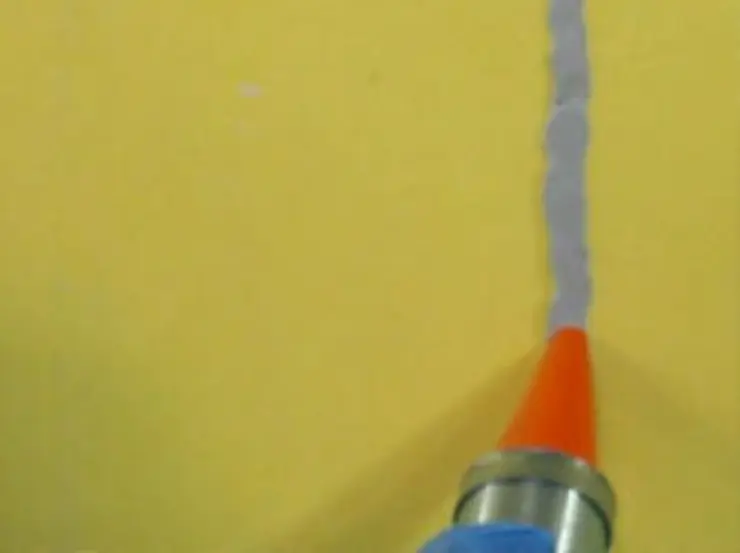
Builders can apply Polyguard Detail Sealant PW™ to trowel-on rough opening flashing/waterproofing above-grade and below-grade applications at penetrations and terminations:
Polyguard Detail Sealant PW™ comes in simple-to-use three-gallon pails or 20 oz. sausages.
Solvent and VOC/HAPS free, non-isocyanate adhesive/sealant Polyguard Detail Sealant PW™ is an eco-friendly solution, unlike toxic silicone, polyurethane sealants, and urethane.
Polyguard Detail Sealant PW™ cures quickly and retains its properties down to -75°F.
Polyguard Aluma-Flash
Aluma-Flash provides UV protection to the existing wall flashing membrane when the space between the exterior finish material bottom is greater than ½-inch above the finished concrete surface.

Two high-strength polyethylene films cover the elastomeric, rubberized, asphalt Polyguard Aluma-Flash waterproofing coating. It also contains a top protective aluminum layer.
Its elastomeric properties will stretch and resist tearing.
The aluminum top allows for long UV exposure times after application.
It resists most chemicals and sunlight.
Polyguard has specifically designed easy-to-apply rolls of Aluma-Flash for walls, with a simple-to-remove film release sheet.
Why Choose Polyguard Elastomeric Flashings?
Long-lasting, easy-to-use Polyguard elastomeric flashing sealants provide superior, long-lasting weatherproofing protection, to prevent leaks during and after construction. In addition, flexible Polyguard elastomeric flashing will maintain its original integrity after applying as a building shifts or settles.
Don't hesitate to contact our team of elastomeric flashing experts today to learn more about how to pick the best elastomeric flashing sealant for your project!




